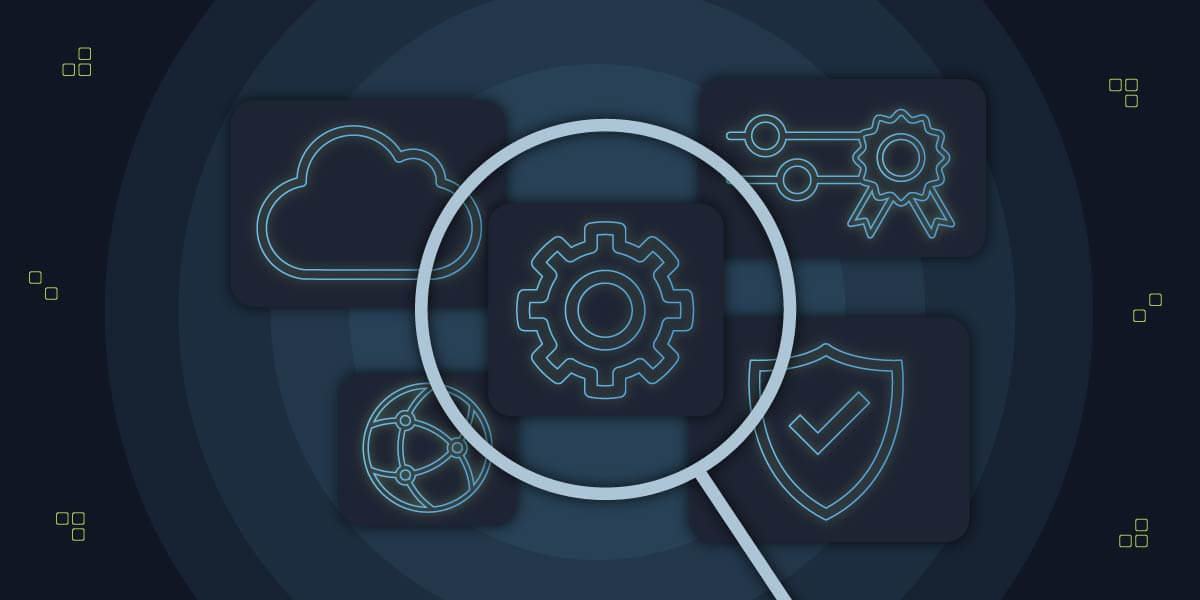At the start of 2021, networking professionals across industries and at companies of all sizes faced similar IT challenges connected to the rise of enterprise edge computing, multi-cloud and multiple cloud networking, and other digital transformation initiatives. Over the past year, these companies, specifically network engineers — have leaned into their digital transformation efforts to ensure they are current with technologies, and internal and external expectations. By now, there are some enterprise companies that are preparing to enter the next phase of their evolution — which includes shifting from multiple cloud deployments to multi-cloud, exploring the need for compliance in those cloud environments, and adopting network automation solutions.
Heavy adoption of multiple clouds by enterprise companies was the first step in their transformation. Some of them will move on to adopt a multi-cloud strategy, while others will remain. Regardless of their final preferred cloud architecture, enterprises must consider the further adoption of cloud-based services and shifting their focus to enable network teams to deploy, automate, and manage the network that stitches everything together. Over the past few years, these teams have mostly been without a voice in cloud-related decisions, and without any tools that can address cloud networking. But to succeed in the future, they need their voices to be listened to.
Examining the current network landscape and looking ahead to the future, I’ve identified key areas where IT and networking professionals need to pay attention in order to further empower their network teams, especially as we close out a year that has been defined by digital transformation, cloud innovation, and a shift to edge computing.
Network Slicing will be Key in the Move into 5G
Network slicing capabilities will be critical to monetizing the benefits of 5G — however, establishing end-to-end slicing will remain a challenge. For instance, mobile providers who are moving toward edge computing often work with third-party providers to hyperscale and augment strategies. In Q1 2021, I predicted that differences in scale preferences will mean that each mobility provider will need to consider which aspects of their infrastructure they will have direct control over, and which aspects they will need to rely on a third party to provide. This still holds true. When a third-party provider is present, mobility providers need to coordinate with these parties and agree on the level of exposure and participation that can be committed to, in order to implement network slice management.
Businesses need to modify their operations and consider new technology that supports this function. For mobile providers and telecom companies, 5G slicing solutions need automation to integrate with solutions that enable edge computing to provide services to customers — whether they partner with an existing cloud provider like Microsoft Azure, or they build their own edge compute infrastructure. For enterprise consumers of these 5G services, they will also want to use automation to manage these services in response to business demands.
Enterprise companies are turning to communication service providers to assist with those business demands. In turn, the communications service providers are recognizing the need to fully automate the edge network operations lifecycle — from the creation of mobile edge computing (MEC) switch fabrics, to adding capacity, to managing overlay network lifecycle, and migrating services and network functions to the edge. Network automation solutions enable businesses to automate the most common and time-consuming activities associated with the creation and operation of MEC sites and networks.
Compliance Across Modern Cloud Networking
Automated network compliance is needed now more than ever due to the widespread push for digital transformation across industries. Now and looking forward, the goal of the network engineer and supporting IT staff needs to be ensuring the cloud is properly configured and managed to enable businesses to realize the full benefits of the cloud and automated processes as they move into the next era of IT advancements. Network engineers need to extend their process of compliance and validation for network changes as a preventative measure rather than purely a reactive one to cloud services. And automation for compliance management across multi-cloud domains can be used to ensure operational consistency across the entire network infrastructure. Automation can also be used to maintain compliance by validating any proposed changes before they are applied.
Smaller SD-WAN Devices Increasing Security for Remote Workers
Wide Area Network (WAN) has traditionally been used to connect branch users to applications hosted in data centers using dedicated MPLS circuits. However, now more enterprises are moving towards SaaS/IaaS applications. With WANs unable to handle the increasing demand for fast changing requirements that come with working across multiple clouds — SaaS/IaaS applications are enabling IT professionals to optimize network and application performance and prevent compliance issues.
Enterprises who have deployed SD-WAN may be looking at how to optimize application performance now that users and applications are dispersed across the Internet. If SD-WAN deployment to branch offices has slowed due to remote work policy, some enterprises will need to deploy smaller SD-WAN devices to remote home users for increased security.
Next Steps
The next phase of network transformation will require enterprises to take a holistic view of the network with increased attention paid to productivity — without having to swivel chair between compliance, automation, and other network tasks. As the level and amount of connectivity increases to form a new era of the network, IT professionals will stay up to speed by evolving their operations to be as efficient and streamlined as possible.
Looking forward, new technical challenges will arise as edge computing becomes more mainstream in the form of 5G and cloud-based programs, particularly as they begin to roll out across more consumer devices. Until then, teams are focused heavily on establishing a strong foundation to endure new digital transformation programs in order to come out stronger than ever before — ensuring network teams are equipped to handle these changes along the way.
To learn more about my views on the state of network automation, check out a recent ONUG Open Session I held with Brad Thornton of Red Hat where we discussed a wide range of topics on the evolution of network automation technology.
Article originally published on www.vmblog.com






